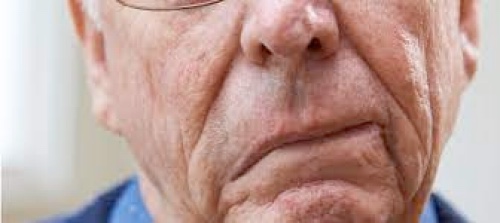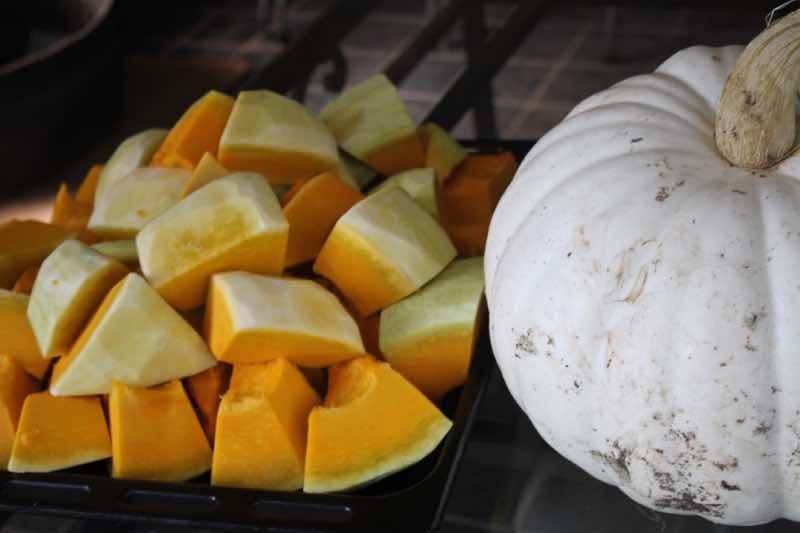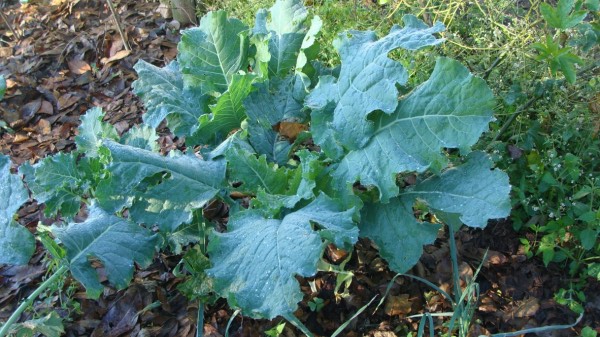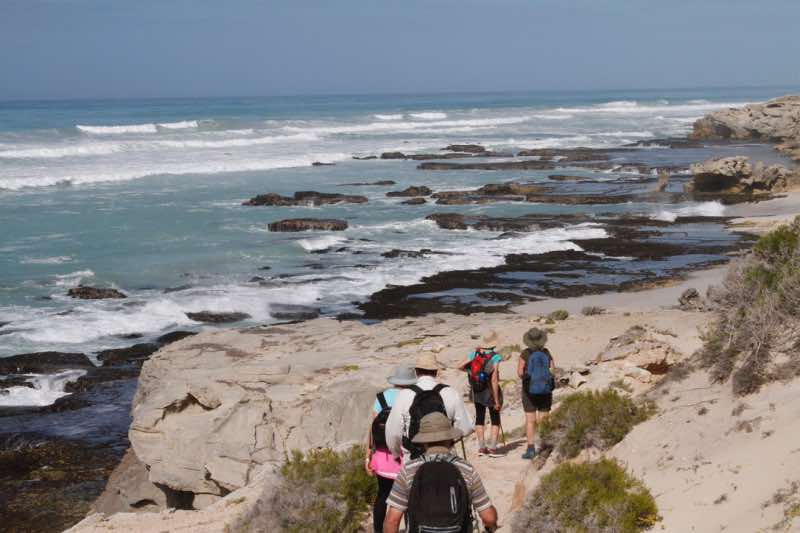- Bernard Preston homepage
- One day
- TIAs Are Warning Shots of a Future Stroke
TIAs are warning shots of a future stroke
TIAs are warning shots of a future stroke. One out of five of those who have just suffered a temporary ischemic attack will have a full-blown episode within three months; and half of them will be observed inside of two days.
Time clearly is of the essence; a diagnosis must be made and action taken. In particular it is vital to deal with hypertension and raised blood glucose.
F.A.S.T.
The same FAST acronym is used to diagnose a TIA as a stroke, even if the symptoms resolve in less than an hour.
- F - Facial drooping
- A - Arm weakness
- S - Speech difficulties
- T - Time to call for an ambulance
 Facial drooping is a common sign of a TIA
Facial drooping is a common sign of a TIATIA mimics
There are certain conditions that will mimic a TIA. It's important to be able to tell the difference. Examples would be a history of migraines and epilepsy.
Factors
Age
History
Symptoms
TIA
Older person
Vascular risk factors
- Sudden onset
- Maximal symptoms at onset
- Normal mental activity
- Focal neurological symptoms such as paresis or difficulty speaking
- Dizziness and nausea
- Vision loss
- Coordination and gait
- Weakness of the trunk when sitting
- Hypertension on presentation
- Headache with pupillary constriction and drooping of an eyelid
TIA mimic
Younger; no vascular risk factors
Epilepsy, migraine or brain tumour
- Symptoms that spread from the site of onset, possible seizure
- Altered mental state
In a wealthy society a CT is initially ordered, followed by an MRI of the brain.
ABCD2 score for a suspected TIA
The burning question is whether the TIA is likely to progress to a full-blown stroke. The ABCD2 score gives one some inkling of the future.
- A - Age > 60
- B - BP > 140/90
- C - Clinical features, unilateral weakness and speech disturbance
- D1 - Duration > 1 hour
- D2 - Diabetes
- Complete remission of diabetes without drugs using food as medicine[3].
- ABCD2 TIA calculator[2]
ABCD2 score
0 - 3
4 - 5
6 - 7
2-day risk
1%
4%
8%
90-day risk
3%
10%
18%
Diabetes
It is obviously very significant that diabetes is the only disease mentioned in the ABCD2 score; by pushing one into the "high" rating, it doubles the risk of having a full-blown stroke.
For those concerned about the prevention of a stroke, BP and blood glucose levels are paramount; the two most difficult areas to achieve patient compliance. In particular it means cessation of smoking and weight loss.
One large bagel for breakfast and two slices of white bread for lunch amounts to seven servings of refined flour with a 47% greater risk of stroke, according to research in BMJ[1].
My personal belief is that it is the clinician's responsibility to point these out very firmly once; and then keeping silent unless asked for guidance. Nagging achieves nothing; but no patient who has had a major stroke should ever be able to say that no doctor ever made these matters absolutely clear.
For centuries orange and yellow foods have been used in the management of diabetes. The known active agents involved in lowering blood glucose are nicotinic acid and trigonelline.
Pumpkin for diabetes makes interesting reading for those concerned with both prevention and treatment of this serious disease.

Obviously pumpkin pie loaded with sugar will not help. Artificial sweeteners like saccharine are not an option either, because of the negative effect on the microbiome.
German researchers have shown that natural unprocessed honey from small beekeepers has a low GI; cooking it in pumpkin pie may invalidate this benefit. Diabetics have to be willing to experiment with different foods, testing their blood glucose response to check the effects.
It is possible that pumpkin pie using natural honey, followed by a walk may be acceptable; it's good for diabetics to do that anyway. Once in the groove it will not prove onerous and actually may become pleasurable even to those averse to exercise.
Diabetics have the responsibility to keep their blood glucose strictly in check; in fact we all should. It's either that or there will be warning shots across the bow, telling us of impending TIAs and strokes.
"People with diabetes who take nonsteroidal anti-inflammatory drugs (NSAIDs) even on a short term basis may have about a 50% greater risk of developing heart failure."
- European Society of Cardiology
From the horse's mouth
Food as medicine

Interestingly there is strong evidence that dark-green leafy vegetables, and particularly the stalks which are rich in nitrates will help lower blood pressure.
So enjoy young leaves, both raw and cooked, with tender stalks.
Vegetables like spinach, kale and broccoli should daily be on the menu; it is not necessary to de-vein young leaves when cooking them.
Other researchers have proved that just by using food as medicine[3], without any drugs almost all those suffering from T2DM can put their disease completely into remission. Obviously becoming more active is imperative too; and especially taking short walks after starchy meals.
We also recommend on a regular basis going on longer hikes.

TIAs are warning shots of a future stroke
TIAs are warning shots of a future stroke often within days if the patient is diabetic or suffers from hypertension.
When browsing use right click and "Open Link in New Tab" or you may get a bad gateway signal.
Newsletter
Our newsletter is entitled "create a cyan zone" at your home, preserving both yourself and Mother Earth for future generations; and the family too, of course. We promise not to spam you with daily emails promoting various products. You may get an occasional nudge to buy one of my books.
Here are the back issues.
- Lifestyle and ideal body weight
- What are ultra-processed foods?
- Investing in long-term health
- Diseases from plastic exposure
- Intensive lifestyle management for obesity has limited value
- A world largely devoid of Parkinson's Disease
- The impact of friendly bacteria in the tum on the prevention of cancer
- There's a hole in the bucket
- Everyone is talking about weight loss drugs
- Pull the sweet tooth
- If you suffer from heartburn plant a susu
- Refined maize meal and stunting
- Should agriculture and industry get priority for water and electricity?
- Nature is calling
- Mill your own flour
- Bake your own sourdough bread
- Microplastics from our water
- Alternative types of water storage
- Wear your clothes out
- Comfort foods
- Create a bee-friendly environment
- Go to bed slightly hungry
- Keep bees
- Blue zone folk are religious
- Reduce plastic waste
- Family is important
- What can go in compost?
- Grow broad beans for longevity
- Harvest and store sunshine
- Blue zone exercise
- Harvest and store your rainwater
- Create a cyan zone at your home
Did you find this page interesting? How about forwarding it to a friendly book or food junkie? Better still, a social media tick would help.
- Bernard Preston homepage
- One day
- TIAs Are Warning Shots of a Future Stroke
Address:
56 Groenekloof Rd,
Hilton, KZN
South Africa
Website:
https://www.bernard-preston.com